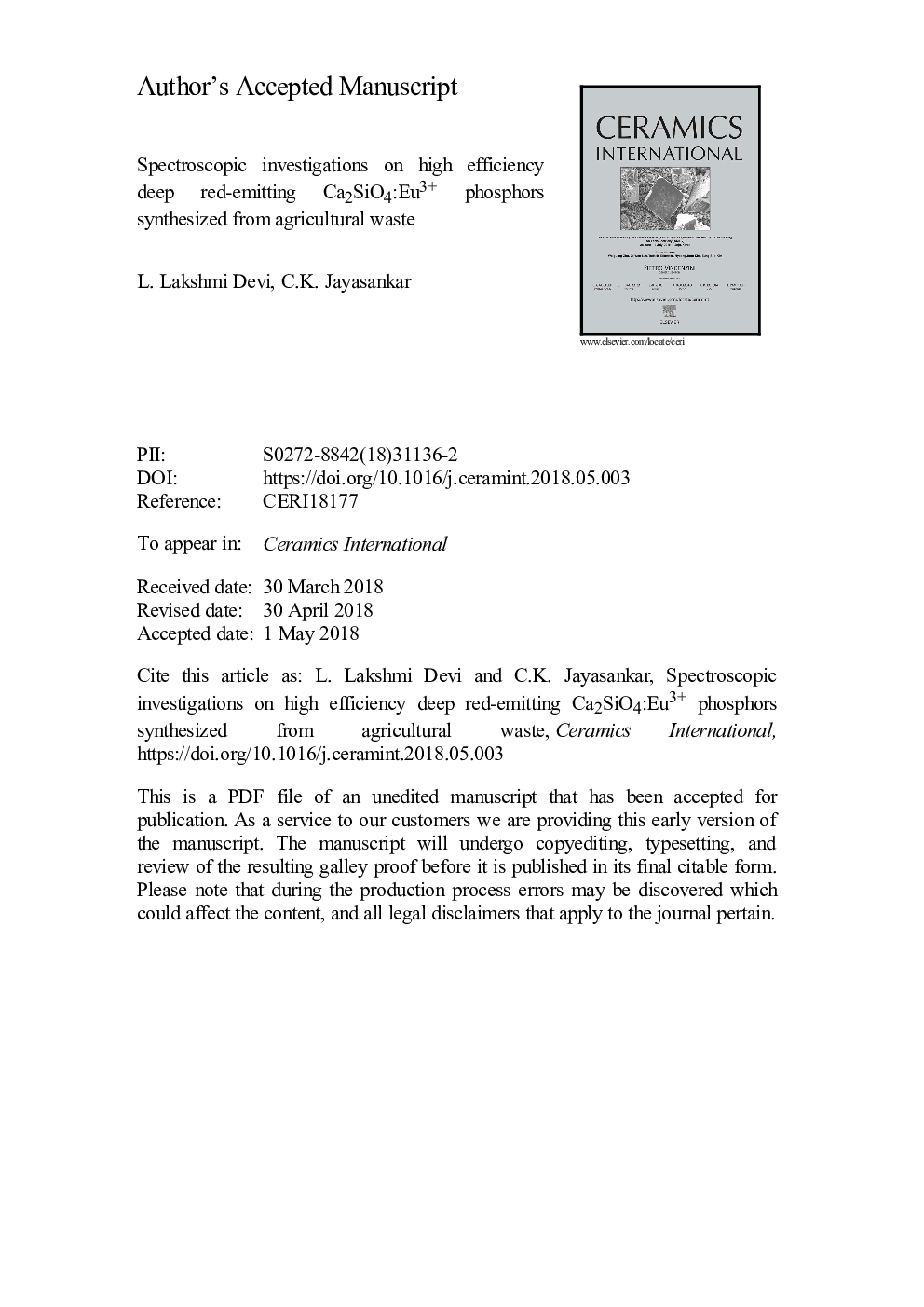| Article ID | Journal | Published Year | Pages | File Type |
|---|---|---|---|---|
| 7886700 | Ceramics International | 2018 | 31 Pages |
Abstract
Europium doped calcium orthosilicate (Ca2SiO4) phosphors have been synthesized by the conventional high temperature solid-state reaction method in various concentrations from agricultural waste (egg shell as a CaO and rice husk as a SiO2). These phosphors structure from X-ray diffraction and morphology from scanning electron microscopy have been examined. Concentration dependent Eu3+ ions luminescent properties in Ca2SiO4 phosphors have been studied from the excitation, emission and decay curves analysis. The 5D0 â 7FJ transitions observed in luminescence spectrum allows to determine the site symmetry of the Eu3+ ion. A charge transfer band (CTB) at around 260â¯nm which is due to the Eu-O interaction in the host along with the 4f - 4f excitation bands due to Eu3+ ions in UV and blue regions are observed. The color co-ordinates determined from emission spectra varies with concentrations of Eu3+ ions and are found to fall in the red region. The decay curves show single exponential behavior for all concentrations of Eu3+ ions (0.01-0.4â¯mol%) and the lifetimes varied from 2.67 to 2.78â¯ms. It is worth noting that the present material is found to be far better than many red phosphors synthesized by using agricultural waste as raw materials.
Related Topics
Physical Sciences and Engineering
Materials Science
Ceramics and Composites
Authors
L. Lakshmi Devi, C.K. Jayasankar,
